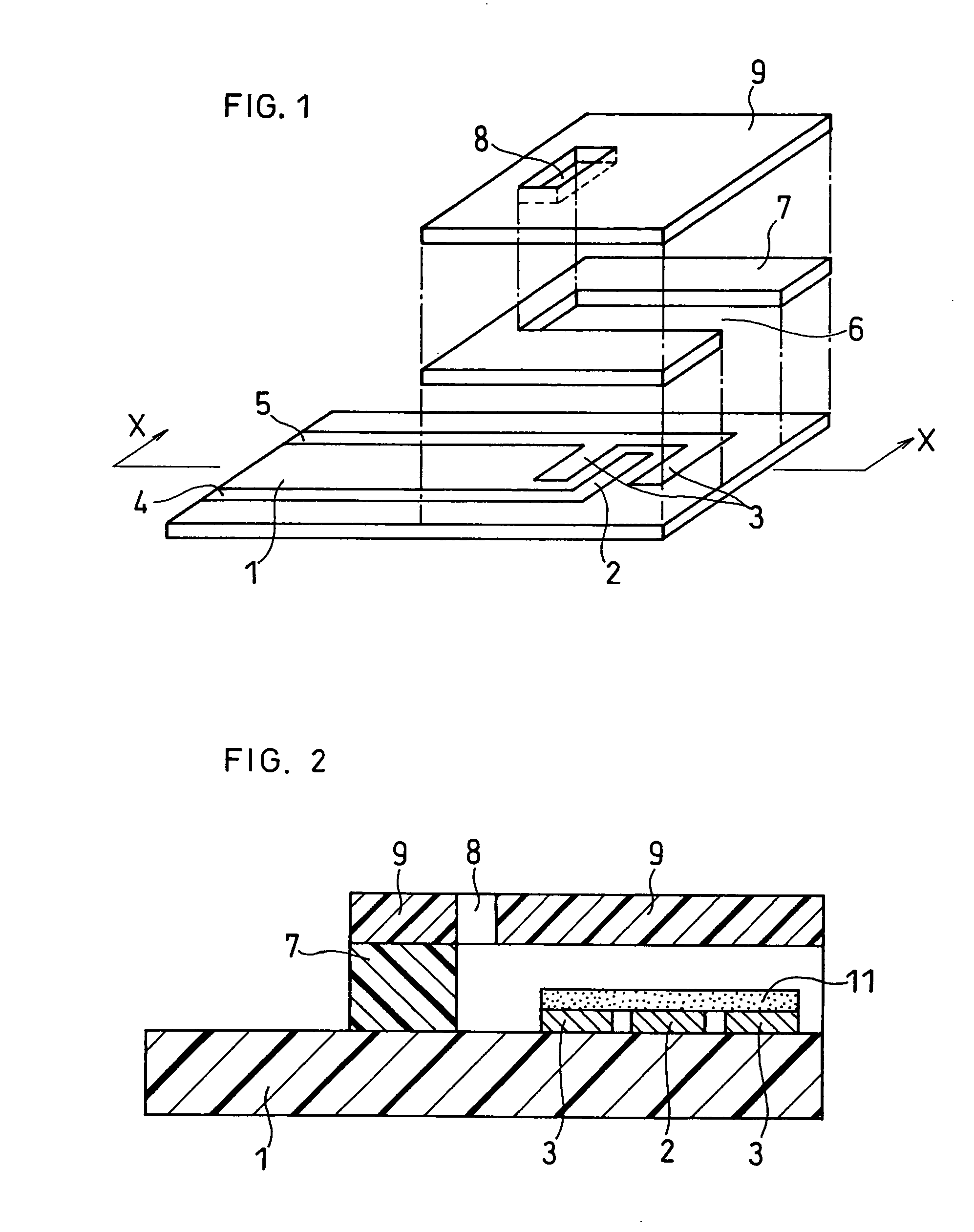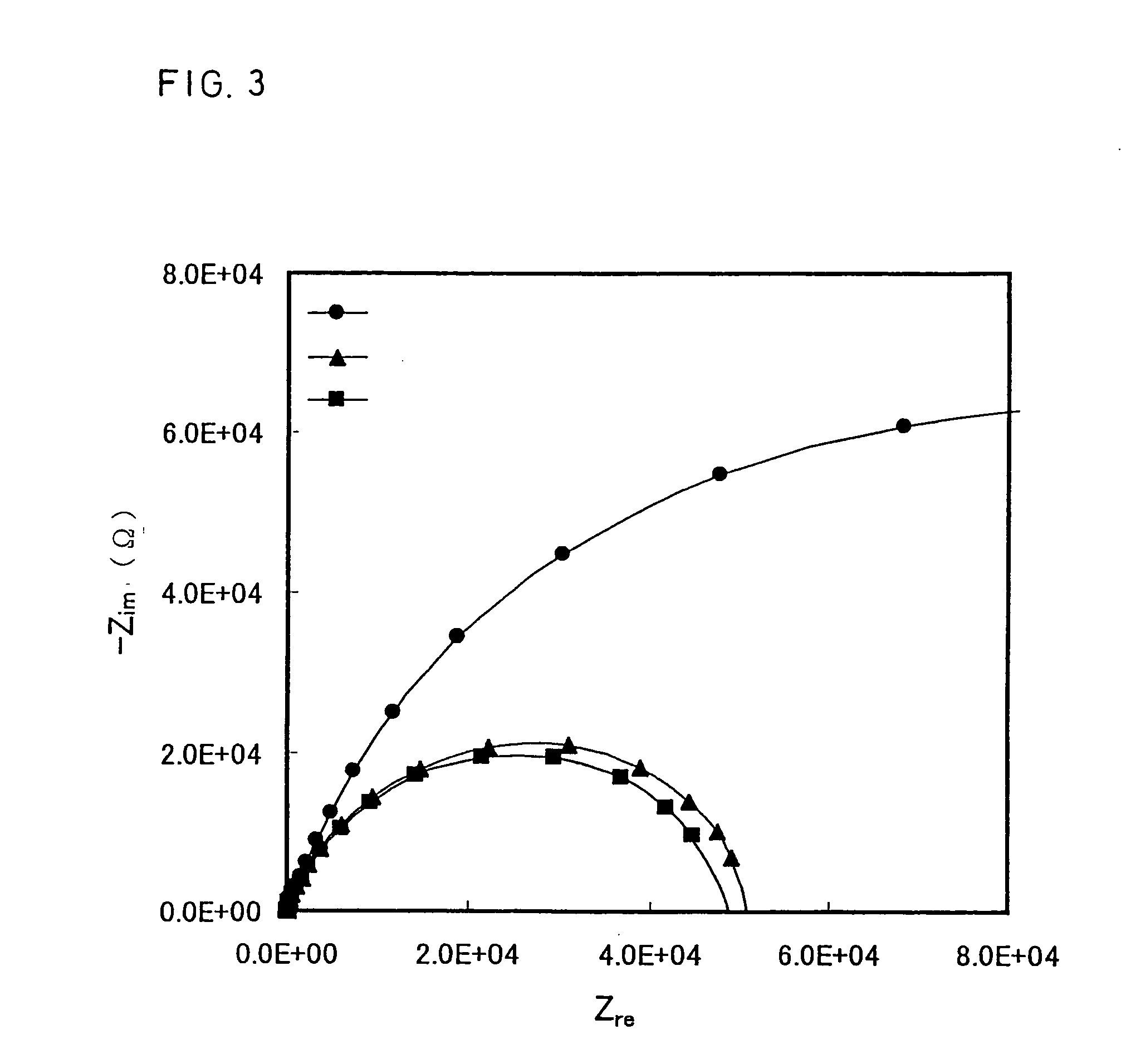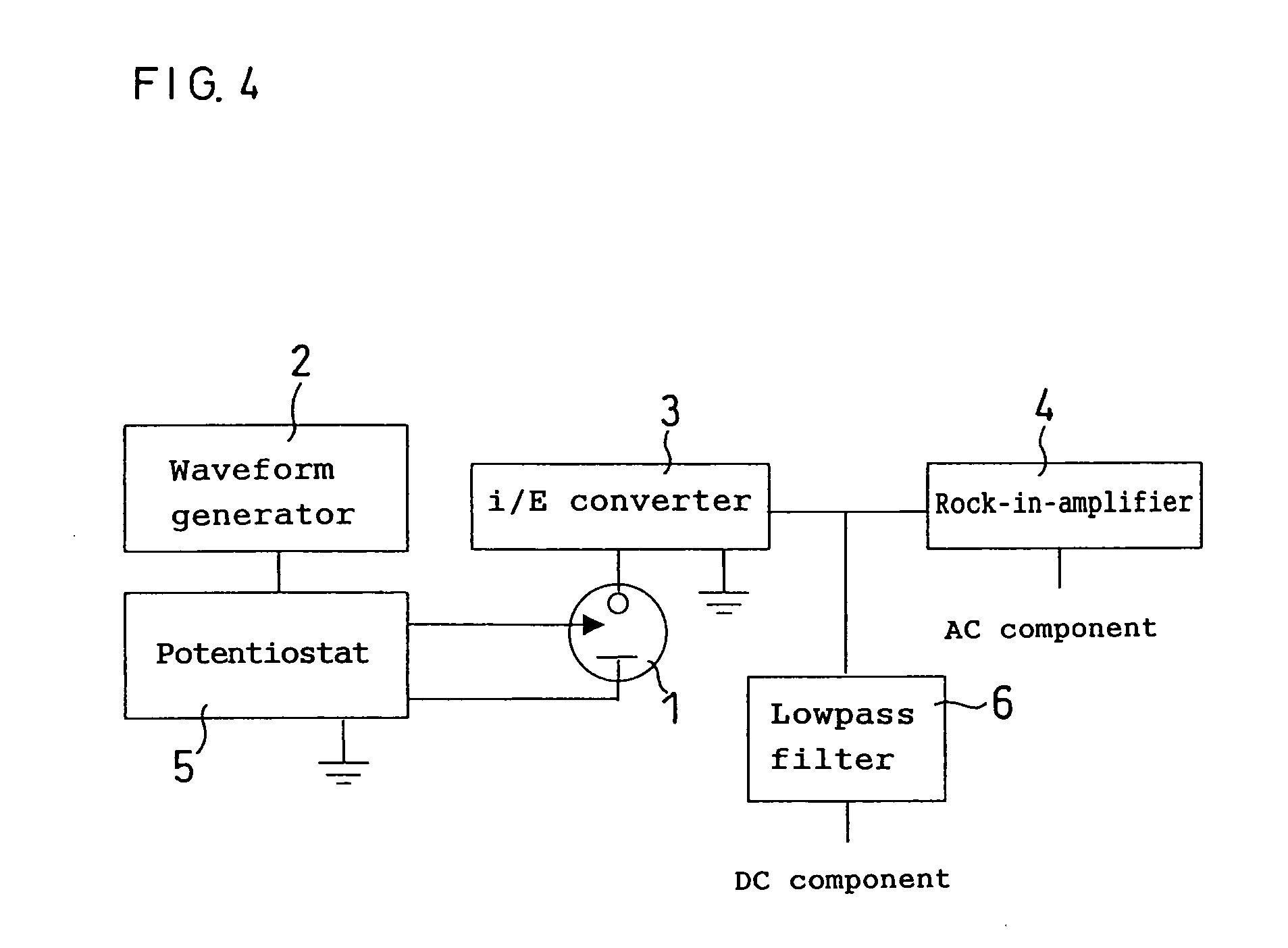Substrate determining method
a determining method and substrate technology, applied in the direction of liquid/fluent solid measurement, material electrochemical variables, instruments, etc., can solve the problems of uric acid and acetaminophen, about an error, and an error induced by measurement error
- Summary
- Abstract
- Description
- Claims
- Application Information
AI Technical Summary
Benefits of technology
Problems solved by technology
Method used
Image
Examples
example 1
[0059] 10 mL of a phosphate buffer with pH 7, where 0.2 mM of ferrocene carboxylic acid and 4 μM of glucose oxidase were dissolved as a reagent system, was obtained. This 10 mL phosphate buffer was put into a container made of Pyrex Glass to be used as an electrolyte, and a circular platinum disc with a diameter of 3 mm was used as a working electrode while a 2 cm-square platinum plate was used as a counter electrode, to construct an electrochemical cell. A glucose aqueous solution as a sample solution where ascorbic acid was dissolved was added such that the concentrations of ascorbic acid and glucose were 0.5 mM and 20 mM (about 400 mg / dL), respectively.
[0060] Then, after the elapse of a certain period of time, an AC potential, having a central potential of +0.1 V relative to the counter electrode and the amplitude of 0.01 V, was applied to the working electrode. A central potential at this working electrode was within the range of −0.1 V to +0.1 V relative to a redox potential o...
example 2
[0064] In the present example, in place of the electrochemical cell used in Example 1, a biosensor produced in the following procedure was used to conduct measurement in the same manner as in Example 1. In the present example, a biosensor with a structure shown in FIGS. 1 and 2 was produced.
[0065]FIG. 1 is an exploded perspective view of the biosensor used in the present example, from which a reagent system has been removed. A resin-made electrode pattern mask was placed on an glass-made electrically insulating base plate 1, and gold was sputtered to form a working electrode 2 and a counter electrode 3. It should be noted that a layer comprising chrome was formed as an adhesive layer between the gold and glass so that the adhesive property therebetween was enhanced. The working electrode 2 and counter electrode 3 were electrically connected to terminals for measurement outside the biosensor through means of leads 4 and 5, respectively.
[0066] After formation of a layer of a reagent...
example 3
[0075] In the present example, an electrolyte (glucose concentration: 20 mM, ascorbic acid concentration: 0.5 mM) with the same composition as in Example 1 and an electrochemical cell were used. After the lapse of a certain period of time, an AC potential, which had a fixed single frequency, a central potential of +0.1 V when taking the counter electrode as a reference and the amplitude of 0.01 V, was applied to the working electrode. After the lapse of a certain period of time, impedance Z was measured. Next, a DC potential of +0.3 V relative to the counter electrode was applied to the working electrode for a certain period of time to measure a direct current I′ flowing between the working electrode and counter electrode.
[0076] As in Example 1, series of electrolytes with different glucose concentrations were used to conduct measurement and plotting in the same manner as above. As the electrolytes with lower glucose concentrations were used, obtained Z gradually became larger, hav...
PUM
| Property | Measurement | Unit |
|---|---|---|
| radius | aaaaa | aaaaa |
| radius | aaaaa | aaaaa |
| radius | aaaaa | aaaaa |
Abstract
Description
Claims
Application Information
 Login to View More
Login to View More - R&D
- Intellectual Property
- Life Sciences
- Materials
- Tech Scout
- Unparalleled Data Quality
- Higher Quality Content
- 60% Fewer Hallucinations
Browse by: Latest US Patents, China's latest patents, Technical Efficacy Thesaurus, Application Domain, Technology Topic, Popular Technical Reports.
© 2025 PatSnap. All rights reserved.Legal|Privacy policy|Modern Slavery Act Transparency Statement|Sitemap|About US| Contact US: help@patsnap.com



